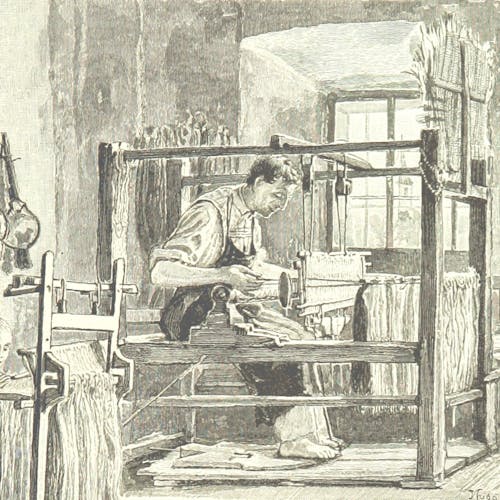How Can I Improve My Credit Score?
- PotpourriBuckle up, Buttercup, it’s about to get tactical! One of the questions I get asked a lot is how to improve one’s credit score, so this month’s scribblings are all about credit.

For many people, the ability to borrow money is important, and your credit score is a huge factor in determining whether you can get credit and at what interest rates.
First, a little history. When most people talk about credit scores, they mean the FICO scores used by lenders to evaluate how much risk is involved in doing business with a particular consumer. FICO is the data analytics artist formerly known as Fair Isaac Corporation; they came up with their own, proprietary method of calculating a credit score…and it caught on. When I refer to credit scores in this post, I’m talking about FICO scores, but VantageScores are also common. Don’t worry too much about other scores, because if your FICO score is good, your other scores are probably good as well.
What IS a credit score? It’s a three-digit number lenders use to predict the risk associated with offering you credit. Plain vanilla credit scores range between 300 and 850, and generally a score in the mid-600s and up would be considered good. FICO also has auto-specific and credit-card-specific scores that range from 250 to 900. Credit scores are based on the information in your credit reports from Experian, TransUnion, and Equifax, the three main credit bureaus.
“But Penny,” you might ask, “Why should I care about having good credit? I don’t want to borrow any money.” And I support you in that! The less money you borrow, the more freedom you have. But here’s the rub: if you have bad or no credit, auto insurance companies will charge you higher premiums to insure your vehicle (except in WA state, where there is a moratorium on that behavior). You might also have to put a cash deposit down for a cell phone or utilities if you have bad or no credit. Finally, landlords use credit scores to evaluate new tenants, so you might have a harder time finding a home to rent if you have bad or no credit.
Assuming you’ve discovered at least one solid reason to pursue good credit, let’s move on to how credits scores are calculated. Now, FICO doesn’t want to open up their magical black box because this is how they get paid. However, they do provide some information about what they take into account when calculating a score. Here are the parameters, with their associated weights:
1. Payment history (35%): refers to whether you pay your credit accounts on time. If you have late payments, accounts that went to collection, or bankruptcies, they all appear in your payment history. The number of these issues, the amounts, and the time it took you to settle them will all affect your credit score. The more payment issues you have, and the larger and more longstanding they are, the lower your credit score will be.
2. Credit utilization (30%): is how much money you currently owe to creditors, divided by the total amount of credit you have available, expressed as a percentage. Lenders like to see this number below 30%, and it also impacts the credit score FICO calculates. The higher your credit utilization, the lower your credit score will be.
3. Length of credit history (15%): refers to how long your credit accounts have been open and you’ve been paying as agreed. If you’ve never been late with a payment in 25 years, your credit score will be higher than someone who’s never been late with a payment in 6 years, all other things being equal.
4. New credit (10%): when you open a new credit account, your credit score could take a temporary hit because sometimes people apply for credit when they’re in financial difficulty. Opening several new accounts at once certainly isn’t recommended. However, FICO and the lenders do know the difference between applying for a bunch of new credit accounts and rate shopping by inquiring about several mortgage or auto loan options at once. Don’t worry about rate shopping; it won’t affect your score.
5. Credit mix (10%): refers to different types of credit, and a good mix of credit types is associated with a higher score. Specifically, revolving credit refers to credit cards, retail store cards, lines of credit, and gas station cards, which don’t have a fixed number of payments. The credit line is just perpetually open, and you charge on it and pay it off as you like, as long as you make the minimum monthly payment. On the other hand, fixed credit refers to loans with a set number of payments, like mortgages, car loans, and student loans. You can’t just add more to the loan once the amount is set, and once you pay it off, you’ve completed your obligation. If you have instances of each type of credit, your score will be higher, since this shows you can manage both types of accounts.
So now you have an understanding of how the score works. How do you get your score so you can see what you have to work with? Like I said above, there are several common scores, so I’m going to give you some options here. If one of these scores is good, chances are your other scores will be, too. Here are some free ways to get your scores:
Great; you’ve secured your score and want to take it even higher. How can you improve your score?
1. Build new credit: if you’re newer to the credit world, simply opening credit accounts and making even small payments on time will help. You could also become an authorized user on a very responsible person’s credit card account, or start with a secured credit card which is guaranteed by a cash deposit you make up front.
2. Pay on time: as you saw above, your payment history is weighted most strongly in the calculation of your score. Set up automatic payments to make sure you’re never late, work with creditors on a payment plan if you do get behind, and make sure non-credit accounts (like gym memberships, legal bills, etc.) don’t go to collection.
3. Catch up on late payments: hey, things happen. If you do get behind, catch up as best you can and try not to have more late payments add up. If you’re in over your head, you might need to work with a credit counselor on a debt management plan. That’s easier on your credit than a default or bankruptcy.
4. Pay down existing balances: as I said above, credit scores take into account your credit utilization. If you pay down your balances but still leave the accounts open as available credit (longstanding open accounts are also good for your credit history; see #3 above), your credit utilization percentage will go down and your score will go up.
5. Pay strategically: this is similar to paying down your existing balances, except that you’re making multiple payments throughout the month to make sure your credit utilization remains consistently low. If you’re one of those people who racks up all your expenses on a credit card and then pays it at the end of the month, the credit bureaus might be reporting your utilization when it’s higher, near the end of your billing cycle. Making multiple payments throughout the month evens this out and keeps your credit utilization more consistent.
6. Request a higher credit limit: this is another way to reduce your credit utilization. If you raise your limit and your balance stays the same, your utilization percentage goes down. Just don’t be tempted to increase that balance to match the limit!
7. Apply for new credit only when you really need to: multiple credit inquiries can lower your scores because they can indicate you’re in financial trouble. Every time you open a new account, it also lowers the average age of your accounts (see #3 above), which can also lower your score.
8. Make sure on-time rent payments are taken into account: your rental payment history doesn’t automatically show up on your credit report. Your landlord either has to be signed up for a rent-reporting service, or they have to verify your payments to the service you select. For the most part, these services aren’t free, but you can check out the details on NerdWallet if you’re interested.
9. Add to your credit mix: if you only have loans, you might look at getting a credit card or retail store card. If you only have credit cards, you may decide to fund your next car or other major purchase with a fixed-term loan, for example.
10. Dispute mistakes: last but certainly not least, you’ll need to review your credit reports regularly to make sure there are no inaccuracies. If you do find mistakes, you’ll need to dispute them with each credit bureau who reports them. Each bureau has a slightly different procedure for disputes, so visit them online for details. The credit bureaus have to investigate the issue and respond to you within 30 days of your dispute.
To find mistakes or look for areas for improvement, you’ll need access to your credit reports. As I said above, the three main credit bureaus are Equifax, Experian, and Transunion. You can get their reports for free on AnnualCreditReport.com. Credit experts generally recommend reviewing your report at least once a year. This can be a good way to catch fraud, too. You shouldn’t see random addresses or credit accounts that don’t belong to you.
I hope this has helped you understand the basics of credit scores. Again, you may decide to opt out of the credit system as much as you possibly can, and I applaud you for it. But I also won’t judge you for your credit balances; just be careful out there!
Finally, I think it’s a great idea for everyone to read “Debt-Free” by Joshua Fields Millburn, because it’s so easy to waste time trying to afford things we don’t even need.



